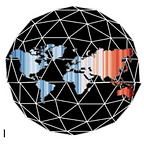Circular City Design Challenge
Daily life in a Circular City is organized differently than our current day-to-day routines require. For the average citizen in a circular economy, the world around us will become more responsive — more resourceful for our civic needs. There is more time for leisure, more time for family, more time for friends, and more time for exploration.
Daily life in a Circular City is inclusive and co creative by design.
Education is at the core of the Circular City experience. As students of the universe, we are seekers of truth driven towards a greater understanding for life on Earth and beyond. As builders, artists, and engineers we understand the challenges now present in the 21th century.
Calculating in evolutionary time — this is our survival of the fittest moment.
Social Enterprise is the financial HUB for a Circular City — the engine — diversifying opportunity for its citizens to follow their intuition,to chase their dreams, adding a more dynamic dimension to main street: redefining the notion of work as play.
From home, a Circular City is an Urban Village — a 15 minute city — creatively accessible and environmentally sound. Through the lens of a just transition access to meaningful work, housing, healthcare, and social mobility is a basic citizen right.
The Circular City is a high-tech enterprise designed for economic & urban regeneration.
The energy grids of a Circular City are interconnected micro grids — Renewable energy installations that are decentralized, community centered, and are developed as opportunities for creative place making and civic art. Energy cooperatives provide a mechanism for wealth building, embedding equity and urban resiliency into the very foundation of our shared infrastructure.
At scale, the goal is to ignite and inspire a clean energy revolution that is both robust and open to change.
Urban mobility in a Circular City is an integrated system of shared services governed by a decentralized smart grid. Some modes are conductor guided, others autonomous, when combined they provide an inclusive network of public options including buses, trains, bikes, scooters, and other on-demand pick-up and delivery services.
In a Circular City we have abandoned privately owned vehicles as a resource.
Shared Mobility in a Circular City allows urban planners and engineers the space needed to rethink the underlying grid; providing the opportunity to de-pave our urban environments, allowing for the upgrade of vital infrastructure services such as city-wide hydrologic systems; wastewater treatment, storm water management, restoration of wetlands, estuaries, flood planes, and for the remediation of toxic soil.
With investments in natural infrastructure like sponge cities, green cities, thriving cities — A Circular City is a revitalized and resilient city, better prepared for the worst-case climate scenarios such as sea-level rise, wildfires, and more extreme droughts, floods, and epidemics.
Urban manufacturing in a Circular City is reliant on a locally sourced regenerative web of circular supply chains and industrial symbiosis. Located in the heart of the Urban Village — The Smart Factory offers modern consumers just about anything and everything imaginable.
The Smart Factory offers goods-as-a-service without the burden of private ownership and end of life disposal. The Smart Factory is a FAB Lab — a Makers HUB — designed for utility and convenience. Through the art of digital transformation The Smart Factory offers the creative consumer a more robust meet-your-maker kind of experience.
For instance — with on-demand apparel manufacturing anyone can become a fashion designer and/or access an open-source database where fashion designers from all around the world have uploaded their designs.
Most importantly, on-demand manufacturing when partnered with maker movements, artisans, craftsmen, and tradesmen will free us from our dependency on our ports for the transport of the goods and services we are all reliant upon, lessening our impact on ocean ecosystems, allowing for their recovery.
The Circular City integrates agriculture into the very fabric of the Urban Village, ushering in the next great agricultural revolution. Inner-city food security combines local solutions like the high-tech efficiency of vertical farming, aquaculture, and agrivoltaics, while the rewilding of our built environment has opened up more space for regenerative urban farming practices and animal husbandry all coexisting in a pea-patch communal setting.
Resiliency in a Circular City is driven by the need for creative diversity.
A Circular City is first and foremost the applied logistics of a global circular economy — an industrial system based on three principles: design out waste and pollution; keep material flows circulating indefinitely; while regenerating Earth ecosystems.
A circular economy is a return to the natural order of things, where waste becomes a resource and all life on Earth prospers.
ARE YOU READY TO TAKE A VISION QUEST IN THE CIRCULAR DESIGN REVOLUTION?
Once you understand the destruction taking place, unless you do something to change it, even if you never intended to cause such destruction, you become involved in a strategy of tragedy. You can continue to be engaged in that strategy of tragedy, or you can design and implement a strategy of change ~Michael Braungart, Willian McDonough — Cradle to Cradle: Remaking the Way We Make Things
A Circular Seattle Arts & Entertainment Initiative
